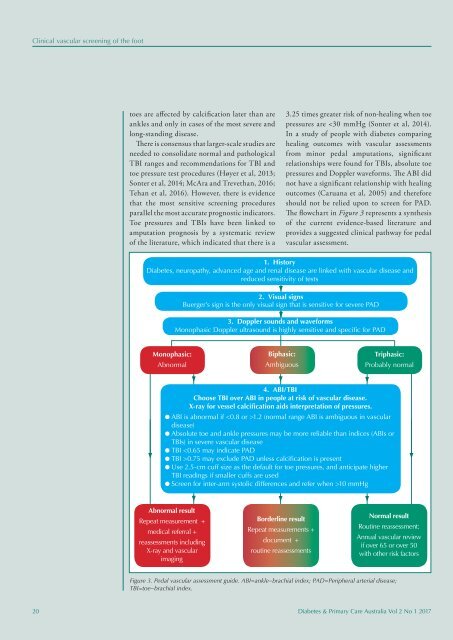DPCA2-1
You also want an ePaper? Increase the reach of your titles
YUMPU automatically turns print PDFs into web optimized ePapers that Google loves.
Clinical vascular screening of the foot<br />
toes are affected by calcification later than are<br />
ankles and only in cases of the most severe and<br />
long-standing disease.<br />
There is consensus that larger-scale studies are<br />
needed to consolidate normal and pathological<br />
TBI ranges and recommendations for TBI and<br />
toe pressure test procedures (Høyer et al, 2013;<br />
Sonter et al, 2014; McAra and Trevethan, 2016;<br />
Tehan et al, 2016). However, there is evidence<br />
that the most sensitive screening procedures<br />
parallel the most accurate prognostic indicators.<br />
Toe pressures and TBIs have been linked to<br />
amputation prognosis by a systematic review<br />
of the literature, which indicated that there is a<br />
3.25 times greater risk of non-healing when toe<br />
pressures are 10 mmHg<br />
Abnormal result<br />
Repeat measurement +<br />
medical referral +<br />
reassessments including<br />
X-ray and vascular<br />
imaging<br />
Borderline result<br />
Repeat measurements +<br />
document +<br />
routine reassessments<br />
Normal result<br />
Routine reassessment:<br />
Annual vascular review<br />
if over 65 or over 50<br />
with other risk factors<br />
Figure 3. Pedal vascular assessment guide. ABI=ankle–brachial index; PAD=Peripheral arterial disease;<br />
TBI=toe–brachial index.<br />
20 Diabetes & Primary Care Australia Vol 2 No 1 2017
















